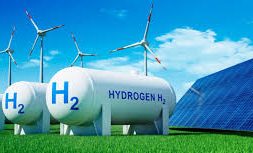
Is It Time For The Solar Industry To Look In The Mirror?
Silicon panels pretty much rule the solar energy sector, with more than 90% of panels manufactured using the versatile element.
This is not by chance; Si PV cells are cheap, robust, relatively easy to install, and perform reliably for decades.
Unfortunately, they also come with a major drawback: Silicon PV panels are quite inefficient, with the most affordable models managing only 7%-16% energy efficiency depending on factors like placement, orientation, and weather conditions. Indeed, solar cells have been around for more than six decades, yet commercial silicon has barely scraped into the 25% range.
Even the much-hyped perovskite solar cells have just barely managed to break the efficiency glass ceiling, with scientists recently setting a new efficiency record for a single-junction perovskite solar cell at 25.6%. To complicate matters, sunlight is a diffuse form of energy.
This makes solar panels unsuitable for hard-to-decarbonize sectors such as steel, heavy industries, marine, and aviation.
Fortunately, concentrated solar power (CSP) is proving to be a viable solution for the solar power and green energy conundrum.
CSP technology employs large revolving mirror arrays, also known as heliostats, to reflect and concentrate sunlight onto a receiver. The mirrors are angled to reflect the sunlight onto a large solar receiver.
This heat–also known as thermal energy–can be used to spin a turbine or power an engine to generate electricity, and also power a variety of industrial applications, including enhanced oil recovery, mineral processing, water desalination, chemical production, and food processing far from the harvesting point.
Concentrating solar-thermal power systems are generally used for utility-scale projects that can be configured in different ways, such as Power tower systems that arrange mirrors around a central tower that acts as the receiver;
Dish-engine systems whereby mirrors are distributed over a parabolic dish surface to concentrate sunlight on a receiver fixed at the focal point, Linear systems that have rows of mirrors that concentrate the sunlight onto parallel tube receivers positioned above them or Parabolic- trough systems that use curved mirrors to focus the Sun’s energy onto a receiver tube that runs down the center of a trough.
CSP comes with major advantages: The thermal energy concentrated in a CSP plant can be stored and used to produce electricity when it is needed–day or night–with bedrocks usually used to store the thermal power to be used to power industrial processes when the Sun goes down.














